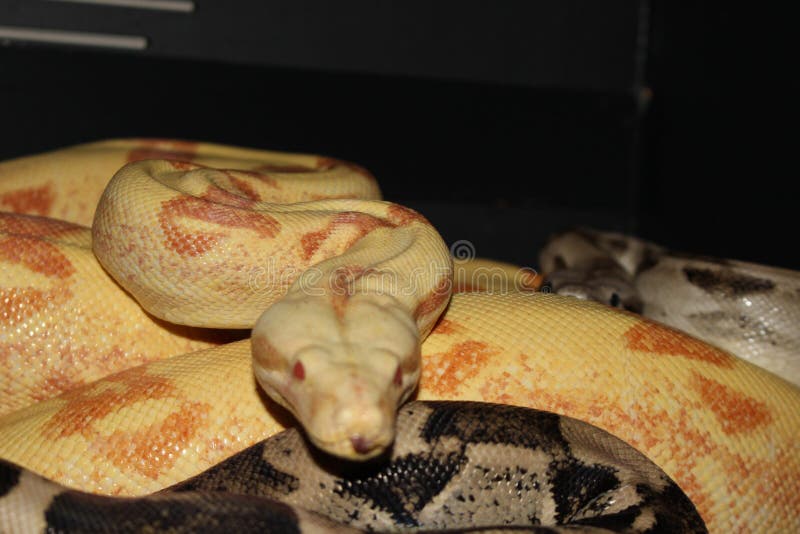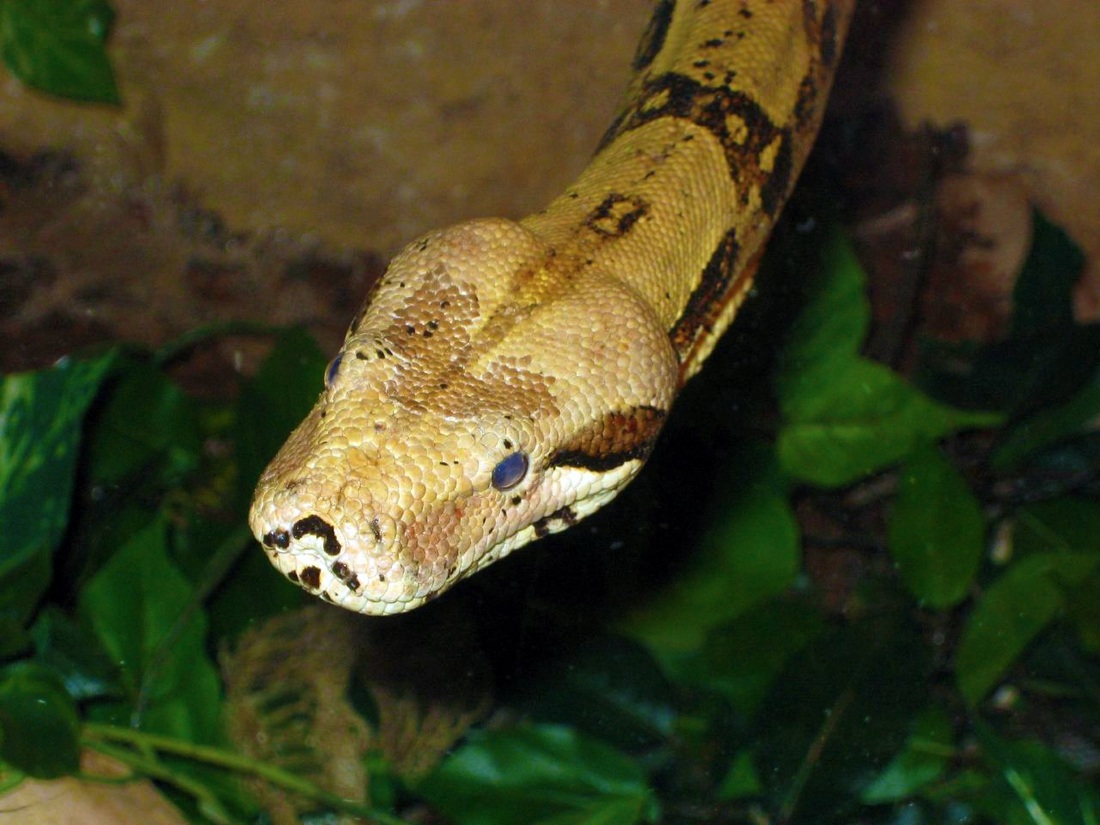
It is this coloring that gives Boa constrictor constrictor the common name of "red-tailed boa" as it typically has more red saddles than other boa constrictor subspecies. The coloring of Boa constrictors can vary greatly depending on the locality, however they are generally a brown, grey or cream base color that is patterned with brown or reddish brown "saddles" that become more pronounced towards the tail. Other examples of sexual dimorphism in the species include the fact that males generally have longer tails to contain the hemipenes and also longer cloacal spurs, hind leg remnants, which are used to grip and stimulate the female during copulation. Boa constrictor constrictor itself reaches, and occasionally tops, the averages given above, as it is one of the relatively large subspecies of Boa constrictor.

These smaller subspecies are generally insular populations. As such there are several populations of Boa constrictors that are known as "dwarf boas", such as the B.c. The size, and weight, of a Boa constrictor is dependent on subspecies, locale and the availability of suitable prey.

The Boa constrictor is a heavy bodied snake, and large specimens can weight up to 27 kg (60Ibs). A report of a Boa constrictor growing up to 18½ ft (5.5m) was later found to be a misidentified Green Anaconda. It is common for female individuals to exceed 10 ft, particularly in captivity, where lengths of up to 12 ft or even 14 ft can be seen. As such the average size of a mature female boa is between 7-10 ft, whilst it is only 6-8 ft for the males. There is clear sexual dimorphism seen in the species with females generally being significantly larger, in both length and girth, than males. The Boa constrictor is a large snake, although only modestly sized in comparison to many other larger snakes such as the Reticulated and Burmese python, and can reach lengths of anywhere from 1-4 meters (3-13 feet) depending on the locality and the availability of suitable prey. Other common names include "jibóia" (Latin American) and "macajuel" (Trinidadian, pronounced mah-cah-well). Within the exotic pet trade it is also known as a "BCC", an abbreviation of its scientific name, to distinguish it from other Boa constrictor subspecies such as the Boa constrictor imperator which is also regularly, and erroneously, referred to as a "red-tailed boa". constrictor, is often referred to specifically as the " Red-tailed Boa". (The distinction is shared with Tyrannosaurus rex.)Īll subspecies are referred to as "Boa constrictors", while the nominate subspecies, B.


Though all boids are constrictors, only this species is properly referred to as "Boa constrictor" an almost unique instance of an animal having the same common and scientific binomial name. This profile focuses on the species Boa constrictor as a whole, but also specifically on the nominate subspecies Boa constrictor. Ten subspecies are currently recognized, although some of these are controversial. A staple of private collections and public displays, its color pattern is highly variable yet distinctive. It is a member of the Boidae family found in Central America, South America and some islands in the Caribbean. The Boa constrictor ( Boa constrictor) is a large, heavy-bodied species of snake.


 0 kommentar(er)
0 kommentar(er)
